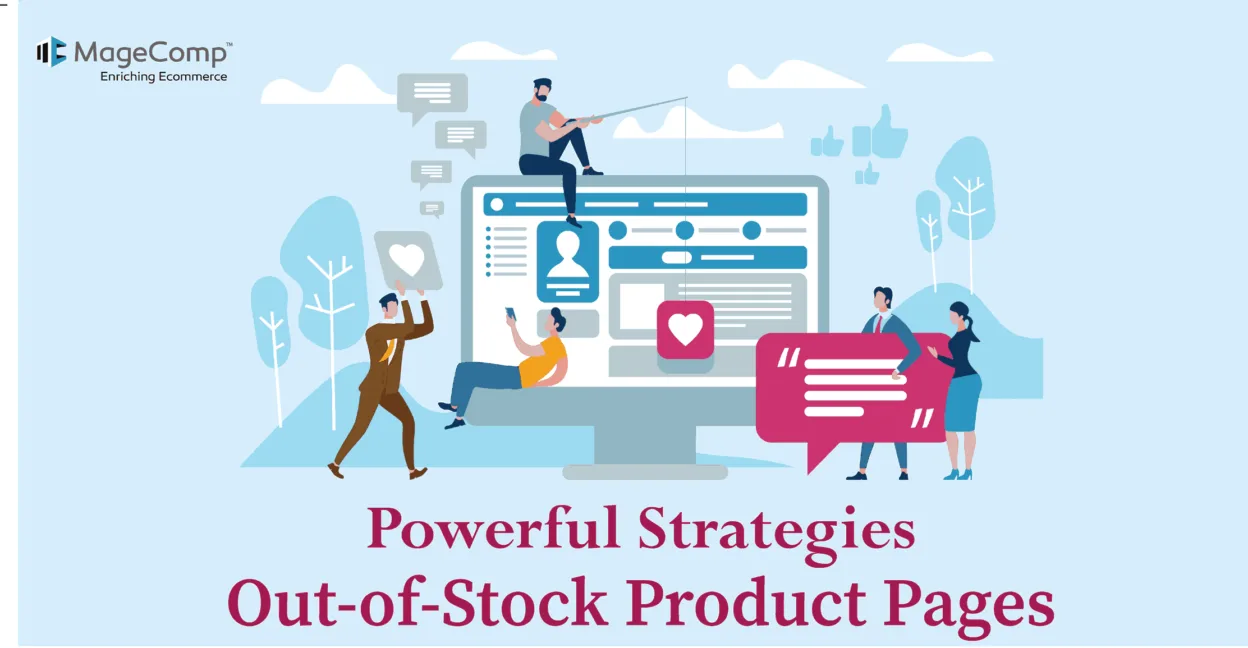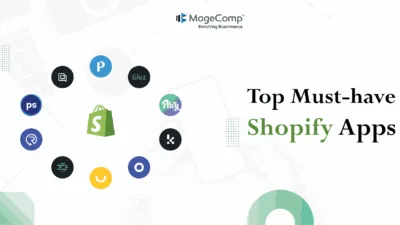One of the most frustrating experiences for online shoppers is clicking on a product they are interested in, only to find out it’s out of stock. In the world of online retail, out-of-stock product pages are a bit like running into a roadblock when you’re in a hurry. It’s like finding a delicious-looking cake, only to realize it’s just a photograph.
It’s frustrating, to say the least, and often leads to customers abandoning their shopping carts or, worse, leaving your site entirely. Out-of-stock product pages can be a nightmare for online retailers as well. They lead to lost sales, increased customer churn, and a poor customer experience.
But don’t fret! There are strategies you can use to not only mitigate the negative impact of out-of-stock product pages but also turn them into opportunities. Here are six powerful strategies to help you out.
6 Powerful Strategies to Handle Out-of-Stock Product Pages
Provide an ETA
One of the simplest yet most effective ways to handle out-of-stock products is to communicate when they’re expected to be back in stock. A clear Estimated Time of Arrival (ETA) can help manage customer expectations and reduce the chances of cart abandonment. Make sure to prominently display the ETA on the product page, in the shopping cart, and during the checkout process. Additionally, consider offering a backorder option where customers can reserve the product and be notified once it becomes available.
Tips on how to effectively provide an ETA for out-of-stock products:
- Provide a specific date or a general timeframe when the product will be back in stock.
- Be transparent about how you arrived at the ETA.
- As the ETA approaches, or if there are any changes to the timeline, make sure to update your customers.
- After the product is back in stock, consider sending a follow-up email to customers who showed interest.
Allow Pre-Orders
Offering customers the option to pre-order products can be a game-changer. It not only generates revenue while the product is out of stock but also helps you gauge demand and prioritize inventory. Clearly communicate the availability date for pre-ordered items and ensure that customers understand they’re pre-ordering. Consider offering incentives like discounts or exclusive access for pre-orders to encourage more customers to take advantage of this option.
Some key steps to consider when implementing a pre-order system on your eCommerce site:
- Clearly communicate on the product page that the item is available for pre-order and provide an estimated delivery date.
- Decide whether you want to require customers to pay in full at the time of pre-order or if you want to accept a partial deposit.
- Clearly outline your pre-order cancellation policy, including any fees that may apply.
- Collect customer email addresses at the time of pre-order and send them regular updates on the status of their order.
- Consider limiting the number of pre-orders you accept for a particular product to avoid over-promising and under-delivering.
- Clearly communicate the shipping options available for pre-orders, including any additional fees that may apply.
- Create a separate pre-order terms and conditions page where you outline all the relevant information about your pre-order system.
Offer Alternatives
When a product is out of stock, don’t just leave customers hanging. Suggest similar or complementary items that are in stock to prevent them from leaving your site empty-handed. You can do this on the product page itself or through targeted marketing emails. Remember, the goal is to keep customers engaged and encourage them to complete a purchase.
Some strategies you can use to provide alternatives when a product is out of stock:
- On the out-of-stock product page, suggest similar items that are available.
- If the out-of-stock product is part of a set or collection, suggest purchasing the other items in the set.
- Highlight new arrivals or bestsellers in the same category as the out-of-stock product.
- If you have a similar product available, consider offering a discount or incentive to encourage customers to make a purchase.
- If the out-of-stock product comes in different sizes or colors, suggest purchasing a different size or color that is available.
Capture Email Addresses
Capturing email addresses from visitors who show interest in out-of-stock products is a powerful strategy to maintain engagement and potentially convert them into customers in the future.
If a product is out of stock, encourage customers to leave their email addresses so you can notify them once it’s available again. This can be done through a pop-up on the product page, a banner on the website, or during the checkout process. Having a database of interested customers can be incredibly valuable for future marketing efforts, so make sure to collect and store these email addresses securely.
Here’s how you can capture email addresses effectively:
- Use an exit-intent pop-up to capture email addresses from visitors who are about to leave your site without making a purchase.
- Place an opt-in form directly on the out-of-stock product page.
- Display a subscription prompt when visitors interact with the out-of-stock product, such as when they hover over the product image or click on the “notify me” button.
- Send personalized emails to visitors who have shown interest in out-of-stock products, inviting them to sign up for email notifications.
- Implement a persistent banner across your website that encourages visitors to sign up for email notifications when out-of-stock products become available.
- After a visitor makes a purchase, encourage them to sign up for email notifications for out-of-stock products they may be interested in.
Use the Out of Stock Notification Plugin for Magento 2 to keep customers updated about product availability.
Maintain SEO Value
Maintaining SEO value for out-of-stock product pages is crucial to ensure that your site continues to rank well in search engine results and that potential customers can still find and access your site. Out-of-stock product pages can still provide value in terms of SEO.
Some strategies to maintain SEO value for out-of-stock product pages:
- Even though the product is out of stock, keep the product page live on your website.
- On the out-of-stock product page, add a clear message indicating that the product is currently unavailable.
- Suggest alternative products or provide links to related categories on the out-of-stock product page.
- If you have multiple pages with similar or identical content, use canonical tags to indicate to search engines which page should be considered the primary one.
- If the out-of-stock product is permanently discontinued and will never be restocked, consider using a 301 redirect to redirect traffic from the old product page to a related product or category page.
- Ensure that the meta tags (title tag, meta description) on the out-of-stock product page are updated to reflect the current status of the product.
Retain the SEO value of your out-of-stock pages by getting help from the Best SEO experts.
Optimize for Mobile
A significant portion of eCommerce traffic comes from mobile devices, so it’s crucial to ensure that your out-of-stock product pages are optimized for mobile. With Google’s mobile-first indexing, it’s crucial to ensure that your out-of-stock product pages are optimized for mobile devices.
Tips to ensure out-of-stock product pages provide a seamless mobile experience:
- Ensure that your website is built with a responsive design that adapts to different screen sizes.
- Make sure that the navigation on your out-of-stock product pages is easy to use on mobile devices.
- Mobile users have short attention spans, so it’s crucial to optimize your out-of-stock product pages for fast loading times.
- If you have an email capture form on your out-of-stock product pages, ensure that it is simple and easy to use on mobile devices.
- If you have a checkout process on your out-of-stock product pages, ensure that it is optimized for mobile.
- Make sure that the content on your out-of-stock product pages is optimized for mobile devices.
Final Say:
In conclusion, while out-of-stock product pages can be frustrating for both customers and retailers, they don’t have to be a disaster. By implementing these strategies, you can minimize the negative impact of out-of-stock products and even turn them into an opportunity to engage with customers and increase sales. Remember, the key is to be transparent, proactive, and customer-centric in your approach.





